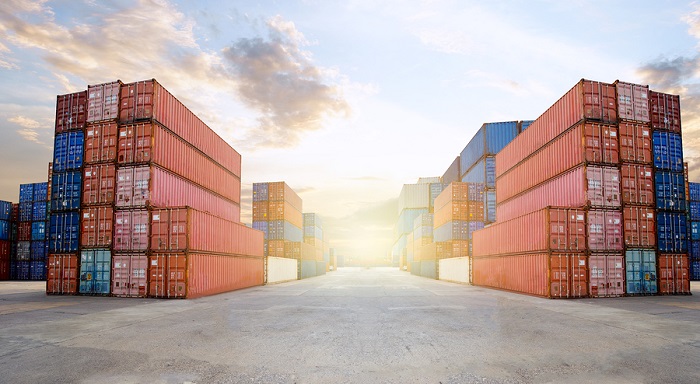Throughout my almost 20-year career in the insurance industry, I have placed a strong emphasis on learning and professional development. Some of it is required as a licensed insurance agent in Florida a. But I also like to learn. I want to be a trusted advisor to my clients.
I am most proud of obtaining the Chartered Property and Casualty Underwriter (CPCU) designation. It took me five years of studying on my own time to complete it. It’s a well-respected designation in the property and casualty insurance industry — like a master’s degree in insurance. It has really helped my career and made me a better agent.
I would like to take a moment to point out that this may be a great time to pursue a professional designation. A lot of people are stuck at home with some extra time on their hands. Building skills, knowledge, and your resume with a home study program is a good use of extra time. Annual conventions are going virtual, and professional associations are offering more webinars, providing greater access to educational opportunities.
In the insurance industry, The Institutes is a great place to start. Whatever industry you are in, reach out to your national organization. Buy some books and start that designation you’ve been putting off!
Supply Chain
Recently I have entered a new, non-insurance world of professional designations. Last September I started working on the Certified Supply Chain Professional (CSCP) designation from the Association for Supply Chain Management (ASCM).
I have a lot of clients who are manufacturers, wholesalers, importers and exporters, so we insure goods in motion. I wanted to understand the process better so that I can help my clients make more informed risk management decisions about their cargo and inventory.
I don’t think that I could have picked a better time to become a student of the supply chain.
There are many more knowledgeable people who can provide a detailed analysis about the complicated supply chain disruptions that have come from COVID-19. But I’ve already gained some important insights from my pursuit of a CSCP designation, and will discuss with my clients when we once again meet in person (hopefully soon!).
Safety Stock
In the last several years, manufacturing and logistics have made big moves toward lean and just-in-time manufacturing. Inventory is expensive. It costs a lot to store and insure, and there are risks involved with keeping product in the warehouse. It can be stolen or burned in a fire. Stock kept too long can become obsolete and unsellable.
Keeping inventory lower and just stocking what you need to keep your customers happy is a great way to cut costs and reduce risk.
At the same time, supply and demand are difficult to project. How do you know how much you are going to need? Will there be a disruption in raw materials that will slow down the manufacturing process? Will your supplier in China shut down for a month to celebrate the new year? (The answer to this one is yes, by the way.)
That is where safety stock comes in. That extra supply of inventory kept on hand can go a long way in hedging those variations in supply and demand. Just-in-time manufacturing has been pushing safety stock levels down, leaving suppliers less prepared for sudden and unexpected variations in the supply chain.
If only there were some consumer good we all use daily that has suddenly become absent from store shelves …
Why did people start hoarding toilet paper? That’s a great question, and I am not currently working on a psychology designation, so we’ll set that aside for now.
From a supply chain standpoint, consumer demand for toilet paper stays pretty consistent over time. This is ideal for just-in-time production. Manufacturers have a pretty solid understanding of how long it takes toilet paper to get from tree to bathroom. When consumer demand spiked suddenly, it created a bullwhip effect throughout the supply chain. That spike at the consumer level became amplified as it worked its way up the chain, from local distribution to the tree farms.
Companies may be increasing safety stock in the future to hedge against disruptions. This is where insurance comes in. As inventory levels increase, it’s important to review your insurance policies. Does your cargo policy include warehouse coverage? Are the levels of coverage sufficient? Do you have temporary seasonal increases that can be accommodated in the policy automatically? Are your goods temporarily stored at customs-bonded warehouses or freight consolidators? Do you have coverage for unnamed locations?
These are questions that should be answered and addressed in the insurance coverage.
Landed Cost
Landed cost refers to the total cost to get your stuff into your warehouse and includes cost of goods, transportation, duties, taxes, insurance, handling fees and currency exchange fees.
Property insurance coverage is generally based on replacement cost – the cost to replace your damaged goods with new goods of like kind and quality. Cargo and marine insurance policies insure goods at cost, insurance and freight plus 10% or 20%, depending on the carrier.
They all basically mean the same thing. Domestic producers have been moving production overseas because the landed costs are lower. It is cheaper to manufacture a lot of goods in Asia than it is to produce them here in the US. The shipping and transit costs of getting goods from Asia are obviously higher than they would be if those same goods were made domestically. But the costs of production are so much lower that the landed costs end up being less. The net costs of getting your goods into the warehouse are lower for goods made in China, even with the additional costs of shipping.
That calculation may change in the future, as disruptions in the supply chain create additional risk. The landed costs could change and production move closer to home. Domestic producers may look for multiple partners to diversify production and reduce exposure to interruption. One of my clients in the metals industry has been sourcing a lot of product from Vietnam that used to come exclusively from China.
It is important to make sure that your cargo and property insurance can respond to the risks of the evolving supply chain.
Here are a couple of good articles about the toilet paper shortage, if you’re curious:
- https://www.cnn.com/2020/03/17/business/toilet-paper-supply-chain-coronavirus/index.html
- https://www.inquirer.com/business/retail/toilet-paper-shortage-coronavirus-temple-wharton-professors-20200413.html
For more information, contact Phil Yanan at pyanan@wwfins.com or 786-454-8383.








Leave a Reply